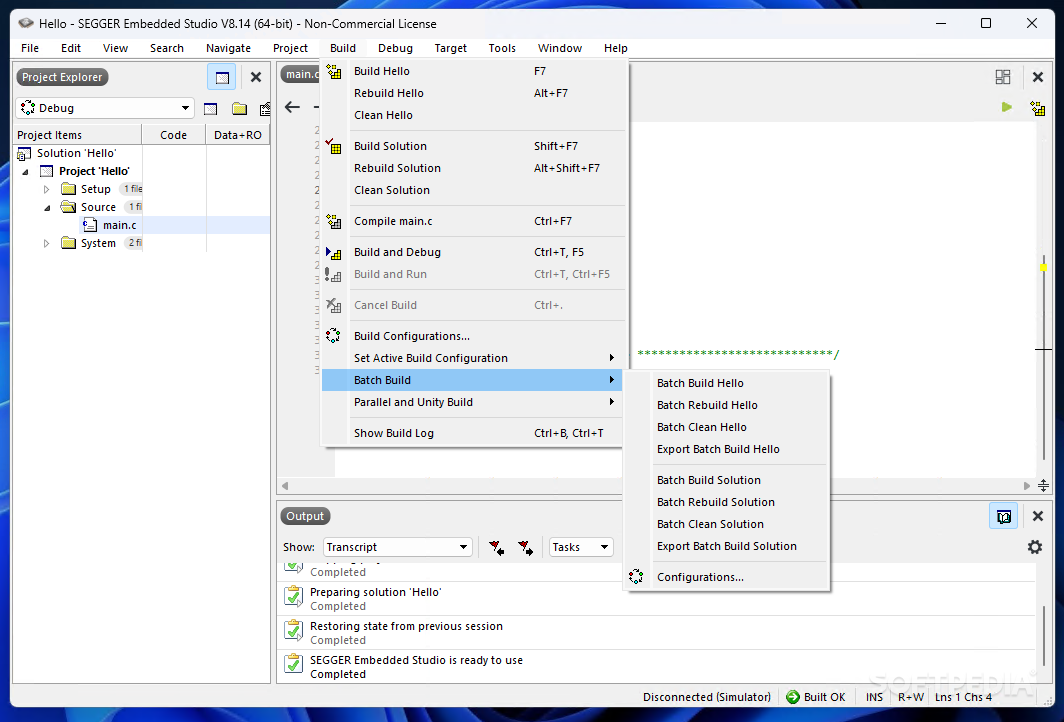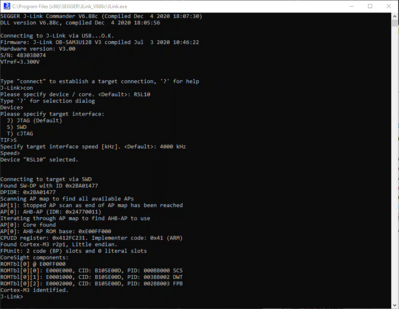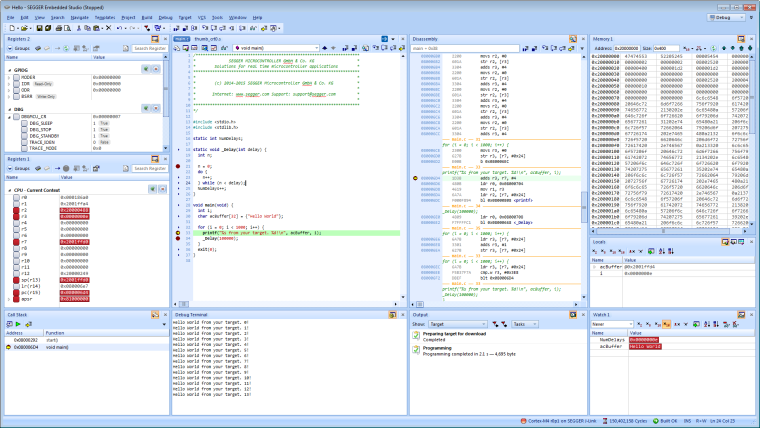SEGGER Embedded Studio also offers an option to use User Build Steps to further automate and expand a build setup. With User Build Steps external tools can be called via command line interface which can then execute tasks at certain hook points after e.g. A build or linking process. Mar 30, 2021 Having J-Link support makes SEGGER's entire portfolio of software tools available with Embedded Studio, SystemView, Ozone, and the J-Link tools. These include both the command-line programs and GUI tools such as J-Flash, J-Flash SPI, J-Scope, the J-Link Configurator, and the GUI version of the SEGGER GDB Server. Replacing is only possible with the first two options. In the moment I’m forced to open Visual Studio Code, do the replacement, and continue developing in Embedded Studio. Accidental changes have lost their scare with a version control system which is definitely used in a project with thousands of files. The memory-usage graph will only be visible if your active project's target is an executable file and the file exists. If the executable file has not been linked by SEGGER Embedded Studio, memory-usage information may not be available. Displaying section information.

This article describes how a J-Link probe can be used together with an Arduino Due board.

Segger Embedded Studio Youtube External Board
- 4Bare-metal Debugging
Minimum requirements
Segger Embedded Studio For Arm
- Any J-Link
- J-Link software V6.86a or later
- Embedded Studio Version 5.10b or later
- A way to connect to the 10 pin debug connector of the Arduino Due board
Preparing for J-Link
As the Arduino Due board comes with a presoldered 10-pin debug connector labeled JTAG all you need is a connector/adapter for that interface.If you are using the full size or compact models of J-Link the 9-Pin Cortex-M Adapter can be used. In this example we are using a J-Link Plus Compact.The resulting connection will then look like this:
- Power the board via one of the USB-Mini ports
- Verify the Connection with e.g. J-Link Commander. The output should look as follows:
Debugging with Arduino tool chain
If you are looking to use a J-Link while using e.g. the Arduino IDE and the Arduino Sketches you can do so as follows:
Segger Embedded Studio Tutorial
- Connect your board to a J-Link as explained above and test the connection with J-Link Commander.
- Download your Arduino Sketch with e.g. Arduino IDE via the USB-Interface as usual.
- Now you can launch your favorite debugger with J-Link and attach to the running application and debug your system.
We recommend using Ozone, the J-Link debugger as it offers the best debug experience with SEGGER debug probes.You can set Ozone to attach to the target device via Debug->Start Debug Session->Attach to Running Program.
Bare-metal Debugging
Example project for SEGGER Embedded Studio

Segger Embedded Studio Linux
The following example project was created with the SEGGER Embedded Studio project wizard and runs out-of-the-box on the Arduino Due board. It is a simple Hello World sample and can be downloaded here:
Note: Using this example project will erase the Arduino bootloader and allow bare-metal debugging of the target device.If you want to revert the Arduino board to its original state you need to flash the Arduino bootloader of the corresponding board you are using.For this the now established connection between your J-Link and the board can be used.
Bootloader sources can be found here:
Segger Embedded Studio Nordic
As a tool we recommend using J-Link Commander where you can use commands loadfile/loadbin to flash the bootloader file. If the bootloader for your board should not be available you can simply dump it into a binary file also using the J-Link Commander and the command savebin.For more information see our J-Link user manual.
Segger Embedded Studio License
